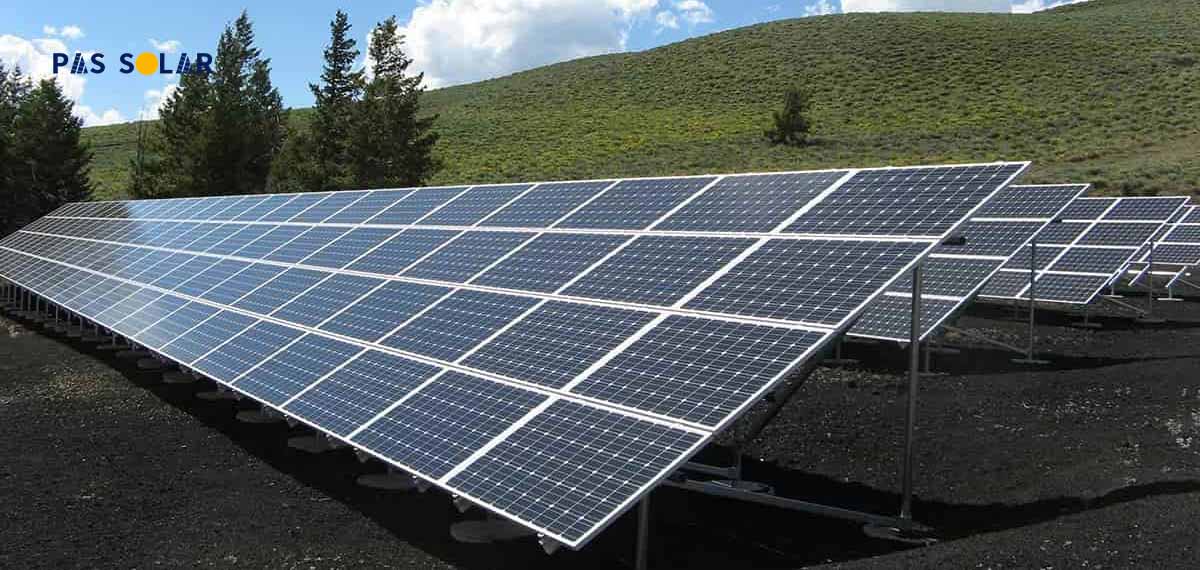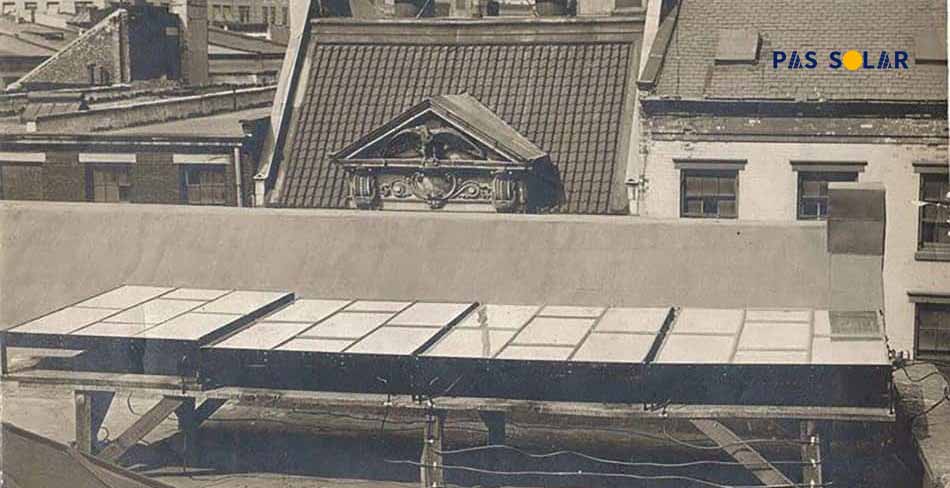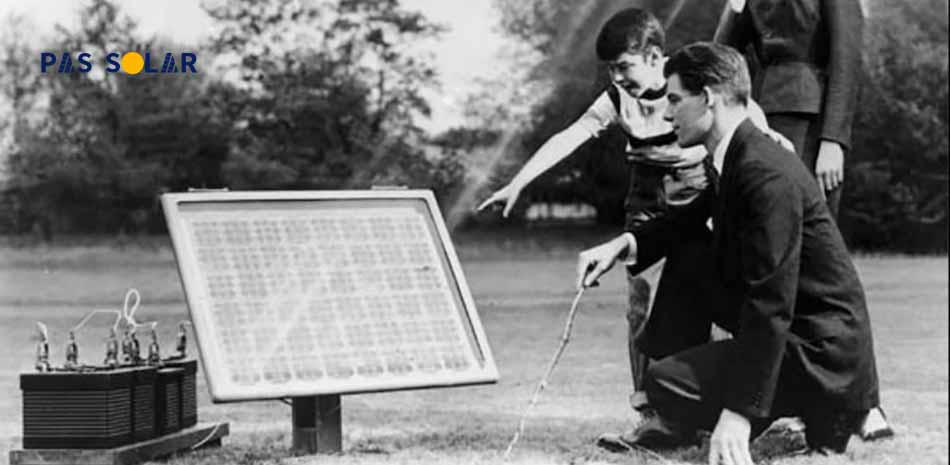Although solar power has found a dynamic and established role in today’s clean energy economy, the history of solar panels goes back centuries ago, which brought the concept of solar power to fruition. With the way the cost of solar power has plummeted over the past decade, it’s easy to forget that solar power had a whole different meaning even just 15 years ago. Let’s go back a few centuries to the origins of solar photovoltaics and explore the history of solar power and silicon solar technology.
When was solar energy first used?
Theoretically, solar energy was used by people since the 7th century B.C. when history tells us that humans used sunlight to light fires with magnifying materials which is the beginning of the history of solar panels. Later, in the 3rd century BC., the Greeks and Romans were known to use mirrors and solar energy to light their lanterns for religious settings. These mirrors became a standardized tool known as “burning mirrors”. Chinese historians documented the application of mirrors for the same reason later in 20 AD.
Another early use of solar energy that is still popular today was the concept of “solariums” on buildings. These sunrooms used huge windows to direct sunlight into a concentrated area. Some of the iconic Roman bathhouses, typically those located on the south side of the buildings, were solariums. Later, in AD 1200, the ancestors of the Pueblo Native Americans known as the Anasazi settled in south-facing dwellings on cliffs to capture the heat of the sun during the cold winter months.
In the late 1700s and 1800s, researchers and scientists found success using sunlight to power furnaces during long journeys. They harnessed solar energy to build solar-powered steamships. Ultimately, it’s clear that even thousands of years before the age of solar panels, the concept of manipulating the sun’s energy was common practice.
When were solar panels invented?
The development of solar panel technology was iterative and took various contributions from various scientists. Naturally, there is some debate as to when exactly they were created and who should be credited with the invention.
Some people know the French scientist Edmond Becquerel as the inverter of solar cells, who realized that light could enhance the generation of electricity as two metal electrodes were put in a conductive material. This advance, defined as the “photovoltaic effect”, influenced subsequent photovoltaic developments with the element selenium, which all became part of the history of solar panels.
In 1873, Willoughby Smith discovered that selenium had photoconductive potential, leading to the 1876 discovery by William Grylls Adams and Richard Evans Day that selenium creates electricity when exposed to sunlight. A few years later, in 1883, Charles Fritts produced the first solar cells made from selenium wafers, which is why some historians credit Fritts with the actual invention of solar cells.
However, solar cells as we know them today are made of silicon, not selenium. The true invention of solar panels is therefore considered by some of the enthusiasts of the history of solar panels to be tied to Daryl Chapin, Calvin Fuller, and Gerald Pearson’s invention, which was the silicon photovoltaic (PV) cell in 1954 at Bell Labs. Many consider this event to be the true beginning of PV technology.
Because it was the first instance of solar technology that could power an electrical device for several hours of the day. The first silicon solar cell could convert sunlight with an efficiency of four percent, less than a quarter of what modern cells are capable of.
Main events in the history of solar panels
Now we’ll go through some of the most significant events that have happened in the history of solar energy:
Solar panels in outer space
Some of the first uses recorded in the history of solar panels were actually in outer space, where solar energy was used to power satellites. In 1958, the Vanguard I satellite was equipped with a small one-watt panel to run its radios. Later that year, Vanguard II, Explorer III, and Sputnik-3 launched with photovoltaic technology on board.
In 1964, NASA was responsible for launching the first Nimbus spacecraft, a satellite capable of running entirely on a 470-watt solar array. In 1966, NASA launched the first Orbiting Astronomical Observatory in the world, run by a one-kilowatt solar array.
First solar residence
In 1973, the University of Delaware became a big part of the history of solar panel for sale in UAE. They were commissioned to build the first solar building, called “Solar One”.
The system worked with a hybrid supply of solar thermal and solar photovoltaic energy. It was also the first instance of Building Integrated Photovoltaics (BIPV): the array did not use solar panels but instead had rooftop integrated solar, similar to the design of Tesla’s new rooftop product.
Achievements in solar conversion efficiency
Between 1957 and 1960, Hoffman Electronics made several advances in photovoltaic efficiency, improving the efficiency record from 8% to 14%. The next important reward was in 1985 when the University of South Wales reached 20% efficiency for silicon cells.
They didn’t use inverters and their panels were all connected to solar panel cables for sale in Dubai. In 1999, the National Renewable Energy Laboratory in collaboration with SpectroLab Inc. created a solar cell with an efficiency rate of 33.3%. The University of South Wales surpassed that rate again in 2016 when researchers reached an efficiency rating of 34.5%.
Solar-powered aircraft
In 1981, Paul MacCready built the Solar Challenger, the first solar-powered aircraft, and flew it across the English Channel from France to the UK. In 1998, the remote-controlled solar plane “Pathfinder” set an altitude record after reaching 80,000 feet. NASA broke that record in 2001 when it reached 96,000 feet with its rocketless plane. In 2016, Bertrand Piccard completed the first zero-emission flight around the world with Solar Impulse 2, the largest and most powerful solar-powered plane in the world today.
Solar Powered Presidencies
In 1979, President Jimmy Carter had solar panels installed at the White House during his term as president, which was a huge part of the history of the solar panel.
However, in 1981, President Ronald Reagan ordered the removal of the White House’s solar panels. In 2010, President Barack Obama requested that solar panels and a solar water heater be installed at the White House.
The importance of the history of solar panels
Regardless of why solar energy is interesting to you, there is a solid and fascinating story behind solar energy’s rise to relevant status. Solar has a long list of meanings in today’s age, spanning multiple industries and powering hundreds of different devices and technologies. Today, buying solar power is easier than ever through any solar panel distributor in Middle East.
You don’t need to know about the history of solar panels to use the power they can produce, but it’s good to know the origins of the technology that is powering so many homes and businesses around the world. In this article, we went through a brief history of solar panels and hope we’ve answered your questions, but if there are any left, please contact us. Although visit types of Off Grid Solar Inverter supplier Dubai in our website.





